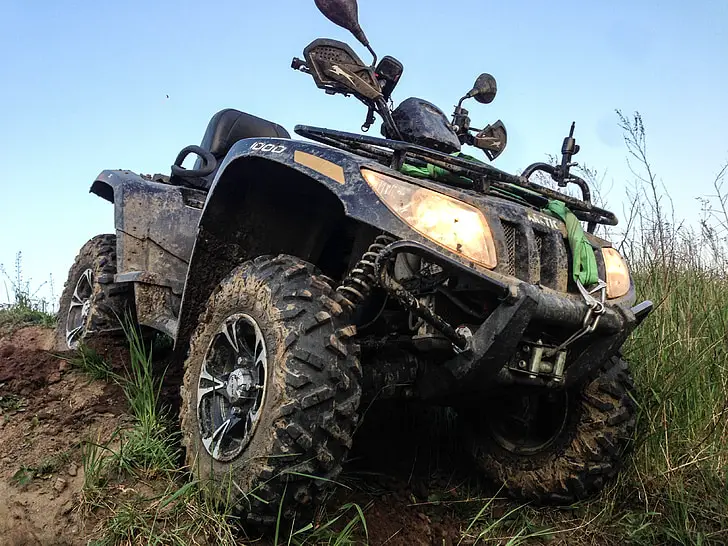
Tires are obviously such an important part of an ATVs performance. The tires play a huge role in controlling the ATV and applying the power the engine holds. So why do you always hear about two-wheel drive and all-wheel drive? What do they mean? How do they affect the ATV? These questions are a must know for anyone trying to improve their ATV driving ability which is why we are here to answer them.
Two-wheel drive will use the back tires only whereas four-wheel drive also known as all-wheel drive will use all four tires. It may seem like four-wheel drive is an obvious choice but they are both handy in certain situations and there are big differences in the power, control and traction they can produce.
There are many logistics and little details that contribute to when to use either. The difference in performance is important to know and how the engine’s energy can transmit to the wheels is also important. We will cover this in this article to truly understand the differences.
What Does It Mean?
The difference between two-wheel drive and four-wheel drive can be really big. The real topics we need to cover to understand this difference is how it affects performance and what it means for the engine and transmission.
Performance wise there is quite a big difference between the two. Two-wheel drive will have more power but a little less control and traction whereas four-wheel drive will have a little less power but much more control and traction. Anyone that has ridden an ATV before in both knows the difference because when you switch it from 2×4 (two-wheel drive) to 4×4 (four-wheel drive), the control and feel for the ATV is so much different.
There are definitely certain times when either is better too. Neither are a better option because they are both useful in different situations. For example, if you are backing up a hill then four-wheel drive will get the job done best. Because of gravity, most of the weight the ATV has will be held up by the front wheels. Since two-wheel drive will only propel the back wheels getting up a hill backwards won’t work too well. When all the weight is on the front wheels it will allow them to gain more traction and do a great job making it up the hill.
Another example is when you are riding on a paved road you will want two-wheel drive. When on a paved road you will definitely turn at some point and if you turn on pavement with four-wheel drive then your front tires will want to move faster than your rear tires. In four-wheel drive on ATVs the transmission will send the same power to the rear and front but if the front needs to move more and can’t then it can cause under steer and transmission wind-up. Both are not good for the vehicle and could cause damages.
Overall what you should keep in mind when driving is two-wheel drive has more power but less traction and four-wheel drive has the same power but dispersed differently to create more traction. There won’t be a huge difference between the two overall so don’t stress about it when riding. Just remember the principles about which had more power and which has more traction and you will be fine.
Another big question we have to tackle is how the vehicle can just switch from spinning the rear tires to spinning all four so easily. This question is crucial because on most ATVs there is just a switch or button and now you are magically driving with four-wheels.
In an engine there is a transmission that transmits the power from the engine to the wheels. In an ATV that has two-wheel drive and four-wheel drive, there will be a transfer case to send power to the rear and the front. The transfer case can control whether you drive a four-wheel or two-wheel. To keep it as simple as possible when you drive two-wheel only the power will be transmitted on an output shaft straight to the rear wheels. When you want four-wheel drive the power will be transmitted on the same shaft but run through a part of that transfer case where a collar and belt will be engaged and transfer the power equally to the front and rear.
For a much more in-depth look at a transfer case and how it switches between two-wheel drive and four-wheel drive, check out this video:
What About a Six-Wheel ATV?
A six wheel ATV will pretty much follow the exact same principles in how the engine transmits power and when to use all wheels. One of the biggest differences is that two-wheel drive will be labelled as 2×6 and all-wheel drive will either be AWD or 6×6. Other than that the performance and engine will all be somewhat the same.

